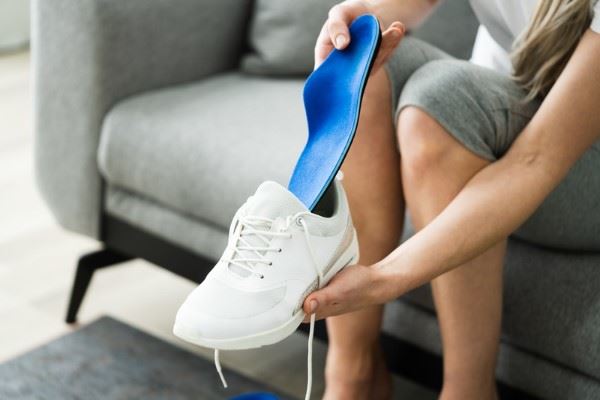-
Home
-
Shin Splints Causes and Treatment Guide
Shin Splints Causes and Treatment Guide
April 27, 2023

Shin splints are an overuse injury, and while they are among the most common injuries in runners, anyone who engages in strenuous or repetitive physical activity is a candidate for shin splints.
If you have shin splints or are an athlete, you probably have many questions surrounding this topic. In this article, we discuss causes and treatment options for this common condition.
What Are Shin Splints?
Shin splints, or medial tibial stress syndrome, cause pain and swelling in the front and inner-facing portions of the lower legs. The pain usually gets worse with more activity. Sometimes, a shin splint can become a stress fracture—an even more painful problem with more challenging treatment.
What Causes Shin Splints?
Overloading your leg muscles and shin bones is the most common cause of shin splints. As a result, athletes like runners or dancers are especially prone to this type of injury.
In addition to overuse, increased intensity can also cause shin splints. For example, if you're a runner who is now running longer distances, uphill, or on a hard surface, you might be at a greater risk.
Risk Factors for Shin Splints
Runners and athletes with higher arches in the foot are more likely to get bone-related injuries such as shin splints. Runners with high arches typically run with stiffer legs, which means they don't bend their knees as much. Therefore, their center of mass doesn't go up and down with each stride, putting more stress on the lower legs and shins.
Having flat feet also increases your risk of developing shin splints. With flat feet, the arches on the inside of the foot flatten when pressure is put on them. With no arch to cushion the stride, this makes the impact of running more jarring.
If you're not sure what type of arch you have, try the "wet test." Get the bottom of your foot wet and assess the shape of your wet footprint:
- Normal Arches: The middle of your footprint is about halfway filled in with a noticeable curve along the arch.
- High Arches: Your footprint is mostly just your heel, the ball of your foot, and your toes without much in the middle.
- Flat Feet: Your footprint is totally filled in without much of an inward curve in the center.
Finally, wearing the wrong shoes is another common cause of shin splints. You might be wearing the same pair of shoes for too long—losing the ability to absorb shock—or wearing improperly fitting shoes, such as those without shoe inserts. Running shoes should be replaced every 300 to 500 miles.
How Long Do Shin Splints Usually Take to Heal?
The healing process for shin splints involves several stages. Pain is the initial stage of the inflammatory process, which usually lasts 3 to 7 days. Shin splint pain tends to be sharp and constant in this stage because of the chemical reactions occurring in the muscle tissue due to strain and stress on the muscle.
Your body spends the next 3 to 4 weeks attempting to heal the damaged tissue by laying down collagen.
The next 2 to 4 weeks are the tissue remodeling phase, in which the collagen tissue gets strengthened and stretched, allowing it to tolerate future stress.
Altogether, this process can take anywhere from seven to nine weeks, or about two months. The exact time varies per person and is based on the extent of the injury. If your injury lasts more than nine weeks, it's likely you aggravated the process by returning too quickly to the activity that injured it in the first place.
What Are the Best Treatments for Shin Splints?
Some of the best shin splint treatments include rest, ice, and orthopedic supports.
Since overactivity is the most common cause of shin splints, resting is paramount to recovery. Those who jump back into activity too quickly after having shin splints diagnosed are likely to experience the injury for much longer than those who rest. During treatment, it's crucial to avoid repetitive or intense exercises.
If you still want to engage in activity, try low-impact exercises like swimming or walking. Stretching is also a great way to remain active during this time without aggravating the injury.
Icing is another at-home treatment you can do for shin splints. Ice your shins for 20 minutes every 3 to 4 hours for up to three days. Icing helps ease pain and swelling associated with shin splints.
Finally, using orthopedic supports such as shoe insoles or inserts is a fantastic idea, especially if you have flat feet. Insoles and other orthotics can help absorb shock and prevent the arch from collapsing when you stand up. You can use these products all the time—not just when running or exercising.
Moving Forward with Shin Splints
If you've been diagnosed with shin splints or display symptoms of shin splints, it's imperative to seek treatment right away.
Treatment looks different for different people. It could mean anything from resting for a few weeks, icing at home, or allowing yourself to cross-train with gentler exercises. It might look like wearing a brace until you're pain-free.
AliMed offers an extensive selection of shin splint solutions, including Neoprene Shin Supports, Medi-Dyne ProStretch Products, Full-Length Cushioned Insoles, and Cold Packs as well as a full line of splints and braces for all your orthopedic needs.